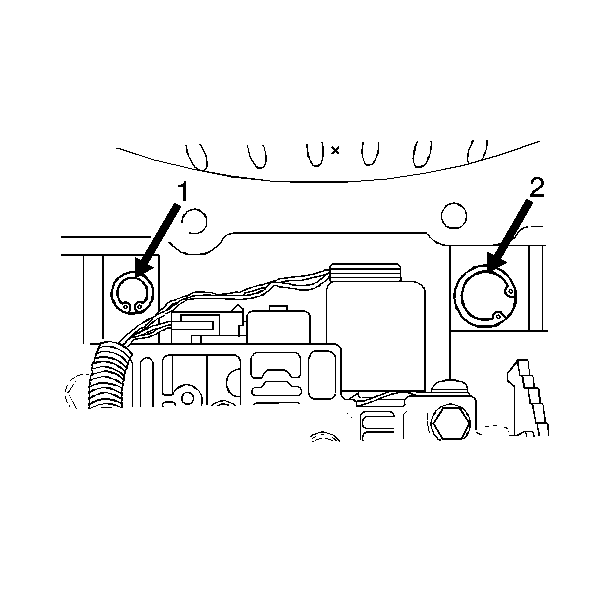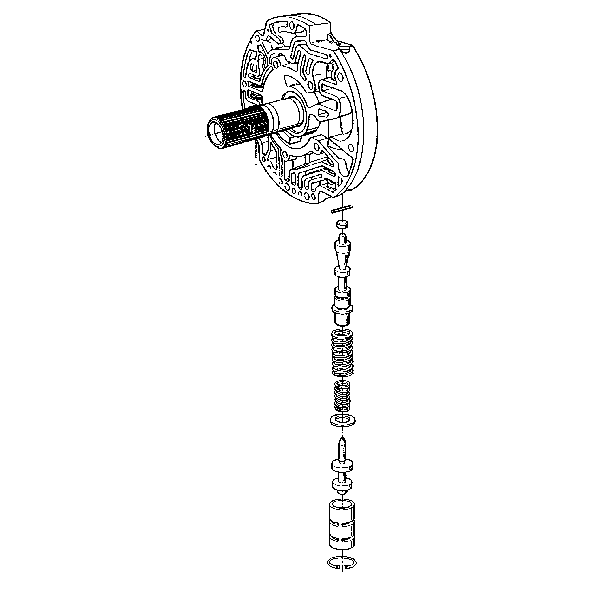Tools Required
J 36850
Transjel®
Removal Procedure
- Raise the vehicle. Refer to
Lifting and Jacking the Vehicle
in General Information.
- Remove the transmission oil pan and the filter. Refer to
Automatic Transmission Fluid and Filter Replacement
.

Caution: Valve springs can be tightly compressed. Use care when removing retainers
and plugs. Personal injury could result.
- Remove the reverse boost valve bushing retainer ring (2).

- Remove the following from the reverse boost valve cylinder:
| • | The reverse boost valve bushing |
| • | The reverse boost valve |
| • | The pressure regulator spring retainer |
| • | The pressure regulator spring |
| • | The pressure regulator valve |
| • | The reverse boost valve bushing |
Installation Procedure
- Install the pressure regulator valve with
J 36850
.

- Pre-assemble the following parts:
| • | The reverse boost valve bushing |
| • | A new reverse boost valve |
| • | A new pressure regulator spring retainer |
| • | The added isolator pressure regulator spring |
| • | The pressure regulator spring |
- Install the pre-assembled parts into the pump bore.

- Install the reverse boost valve bushing retainer ring while holding the reverse boost valve bushing in place.
Ensure the retainer ring (2) is in the groove.
- Install the transmission oil pan and the oil filter. Refer to
Automatic Transmission Fluid and Filter Replacement
.
- Lower the vehicle.
- Fill the transmission to the proper level with DEXRON® VI transmission fluid. Refer to
Transmission Fluid Check
.
Important: It is recommended that transmission adaptive pressure (TAP) information be reset.
Resetting the TAP values using a scan tool will erase all learned values in all cells. As a result, The ECM, PCM or TCM will
need to relearn TAP values. Transmission performance may be affected as new TAP values are learned.
- Reset the TAP values. Refer to
Transmission Adaptive Functions
.




